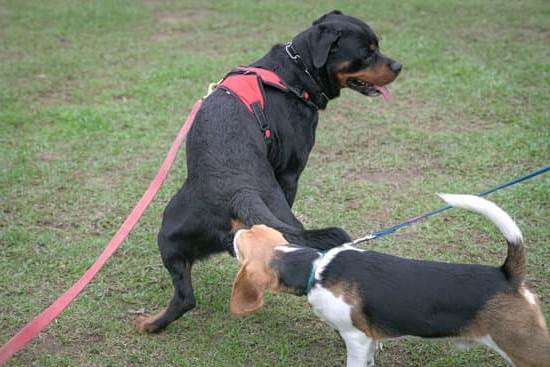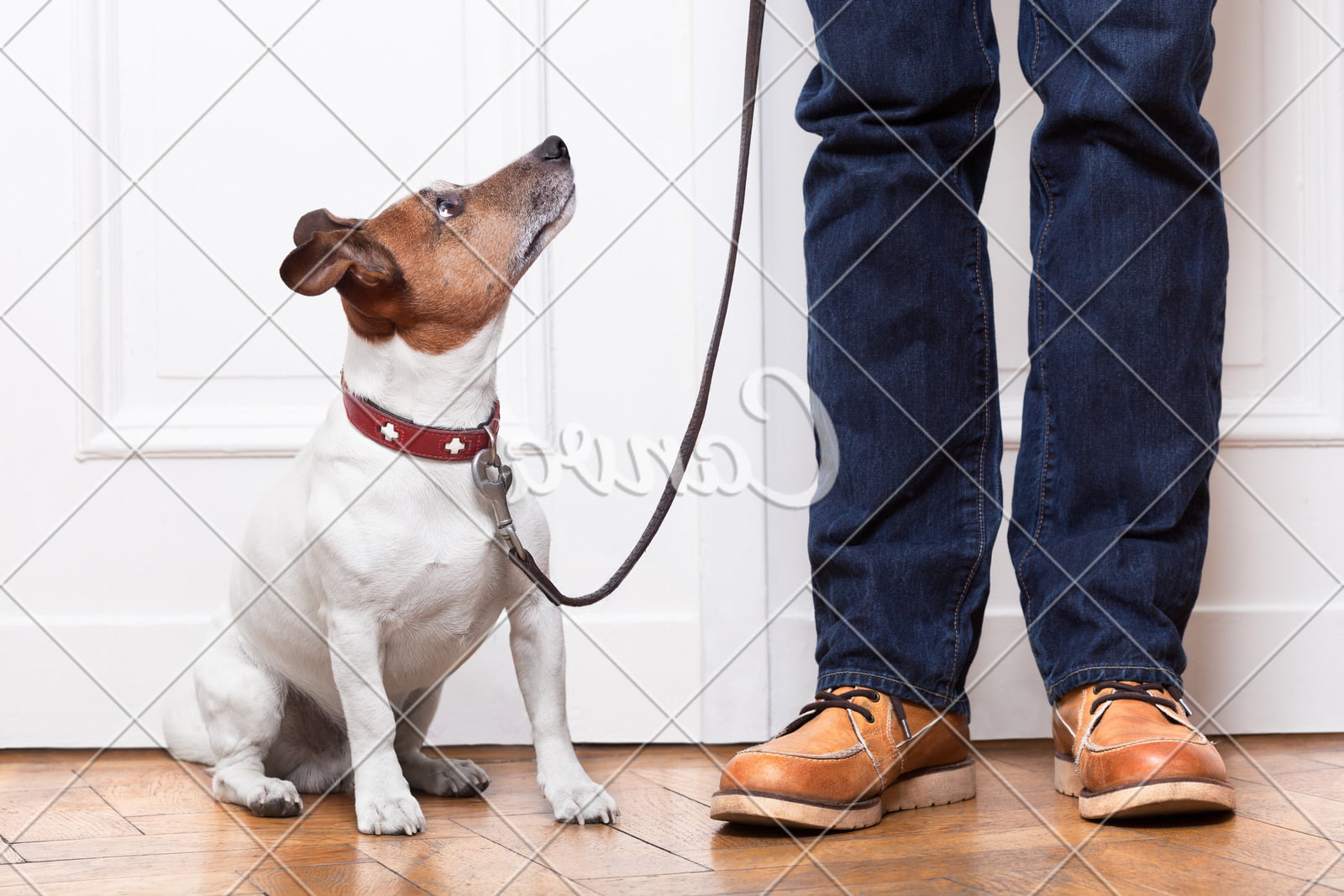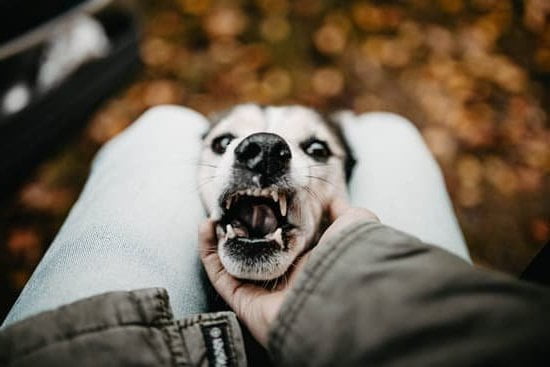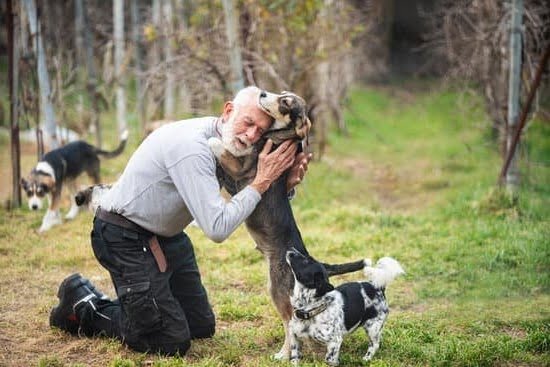Having two male dogs that don’t get along can be a challenge for any pet owner. However, with the right approach and understanding of dog behavior, it is possible to train them to coexist peacefully. In this article, we will explore how to train two male dogs to get along by addressing their aggression and building positive relationships between them.
Understanding Dog Behavior is crucial before beginning any training. By recognizing the signs of aggression and understanding the causes behind it, pet owners can address the issue more effectively. It’s vital to know why your male dogs are exhibiting aggressive behavior towards each other in order to develop a plan that will work for both pets.
Building a positive relationship with each dog is an essential part of training two male dogs to get along. By creating a bond based on trust and respect, pet owners can help alleviate tensions between their pets. Setting up routines for exercise and playtime can also contribute significantly to reducing aggression, as it provides an outlet for their energy and helps establish a sense of normalcy in their environment.
Types of Dog Aggression and Its Causes
When training two male dogs to get along, it is crucial to understand the different types of dog aggression and their causes. One common type of aggression is fear-based aggression, which can occur when a dog feels threatened or scared. This can be triggered by new environments, unfamiliar people, or other dogs.
Another type is dominance-based aggression, where one dog tries to assert its dominance over another. This can lead to conflicts between the two dogs if not addressed properly.
In addition to understanding the types of aggression, it is essential to recognize the potential causes. Lack of socialization during puppyhood, previous traumatic experiences, medical issues, and genetic predisposition can all contribute to aggressive behavior in dogs. Identifying the root cause of aggression in each dog is crucial in addressing and managing their behavior effectively.
It’s also important to consider that some breeds may have a higher tendency towards certain types of aggression due to their genetics. For example, breeds that were originally developed for guarding or protection purposes may exhibit more territorial or protective aggression tendencies. Understanding these breed-specific traits can help in developing an effective training plan tailored to the individual needs of each dog.
| Types of Dog Aggression | Potential Causes |
|---|---|
| Fear-Based Aggression | New environments, unfamiliar people or animals |
| Dominance-Based Aggression | Need for asserting dominance over another animal |
Building a Positive Relationship With Each Dog
Building a positive relationship with each of your male dogs is crucial in ensuring that they get along well. It’s important to spend quality time with each dog individually in order to strengthen your bond and build trust. This can involve going for walks, playing games, and simply spending quiet time together. By doing so, you are reinforcing the idea that each dog is important and valued.
Another key aspect of building a positive relationship with each dog is through consistent and fair leadership. Dogs thrive under clear leadership, so it’s essential to establish yourself as the pack leader in a calm and assertive manner. This will help prevent any power struggles between the dogs and create a harmonious environment.
Consistent training also plays a vital role in building a positive relationship with each dog. Training not only strengthens the bond between you and your dogs but also helps them understand boundaries and expectations within the household.
Build a Positive Relationship With Each Dog
| Aspect | Description |
|---|---|
| Quality Time | Spending individual quality time with each dog to strengthen the bond. |
| Leadership | Establishing yourself as the pack leader through calm and assertive leadership. |
| Consistent Training | Training to strengthen the bond, set boundaries, and clarify expectations. |
Setting a Routine for Exercise and Playtime
Creating a Consistent Schedule
It’s important to create a consistent schedule for exercise and playtime for both dogs. This could include regular walks, trips to the dog park, or interactive play sessions at home. By sticking to a routine, your dogs will come to expect and look forward to these activities, which can help reduce tension between them.
Providing Mental Stimulation
In addition to physical exercise, it’s essential to provide mental stimulation for your dogs through activities such as puzzle toys, obedience training, and scent games. Mental stimulation can help alleviate boredom and prevent behavioral issues that may arise from lack of mental engagement.
Reinforcing Positive Behavior Through Play
Using playtime as an opportunity to reinforce positive behavior can be highly effective in improving the relationship between your male dogs. For example, you can use play as a reward for good behavior during training sessions or when they interact with each other calmly. By associating positive experiences with each other through playtime, you can help build a more harmonious relationship between your dogs.
Introduction and Supervised Socialization
When introducing two male dogs to each other, it is important to understand that proper introductions and supervised socialization are crucial for their ability to get along. Dogs, especially males, can be territorial and may display aggressive behavior when meeting new dogs. To ensure a smooth introduction, it is essential to follow certain guidelines.
Slow and Controlled Introductions
It is recommended to introduce the two male dogs in a neutral territory where neither dog feels the need to protect their space. Both dogs should be leashed during the initial meeting and allowed to sniff each other while being closely supervised. Any signs of aggression or tension should be addressed immediately by separating the dogs and trying again later.
Positive Reinforcement for Good Behavior
During the introduction process, positive reinforcement techniques should be used to encourage good behavior from both dogs. This means rewarding calm and friendly interactions with treats or praise. By associating positive experiences with being around each other, the dogs will start to feel comfortable in each other’s presence.
Supervised Socialization Activities
After several successful introductions, supervised socialization activities such as walks or playtime together can help the two male dogs build a positive relationship. These activities should always be monitored closely, and any signs of aggression should be addressed promptly. Gradually increasing the time spent together in these controlled environments can help foster a harmonious relationship between the two dogs.
Creating Separate Spaces for Each Dog
When training two male dogs to get along, it is essential to create separate spaces for each dog within the household. This allows each dog to have its own area where it can eat, sleep, and relax without feeling threatened by the other dog. Here are some tips for creating separate spaces for your dogs:
- Provide individual sleeping areas: Dogs should have their own designated sleeping areas where they can retreat and feel safe. This could be separate beds or crates placed in different parts of the house.
- Feeding in separate locations: To avoid any potential food-related aggression, it’s important to feed each dog in a separate location. This prevents any conflicts over food and reduces the risk of one dog feeling anxious during mealtimes.
- Playtime and toys: Each dog should have access to its own toys and playtime. It’s crucial to ensure that there are no struggles over toys or resources, so providing multiple toys and keeping an eye on their interactions during play is important.
Creating separate spaces for each dog not only helps them feel secure but also reduces the likelihood of conflicts arising from sharing resources. Implementing these strategies can contribute positively to their relationship and overall harmony within the home environment.
By ensuring that each dog has its own space and resources, you can prevent unnecessary tension between them, ultimately aiding in their ability to coexist peacefully within the same household.
Using Positive Reinforcement Training Techniques
When training two male dogs to get along, it is crucial to utilize positive reinforcement techniques to encourage good behavior and discourage aggressive tendencies. Positive reinforcement involves rewarding desired behaviors with treats, praise, or toys, which can help create a harmonious relationship between the dogs.
Here are some positive reinforcement training techniques that can be useful when training two male dogs to get along:
- Rewarding calm behavior: Whenever the dogs display calm and non-aggressive behavior towards each other, immediately reward them with treats and verbal praise. This will help them associate peaceful interactions with positive rewards.
- Redirecting undesirable behavior: If one of the dogs shows signs of aggression or tension towards the other, redirect their attention to a more positive activity such as sitting or performing a trick. Once they comply, reward them with a treat to reinforce the desired behavior.
- Clicker training: Using a clicker to mark and reward good behavior can be an effective way to train both dogs simultaneously. For example, if they are able to sit quietly next to each other without showing signs of aggression, click the clicker and give them each a treat.
By employing these positive reinforcement techniques consistently and patiently, you can gradually shape the dogs’ behavior toward more favorable interactions with each other. It is important to remain consistent in your approach and celebrate even small progress in their ability to coexist peacefully.
Seeking Professional Help When Necessary
In some cases, despite your best efforts, two male dogs may still struggle to get along. When you have exhausted all of your resources and the situation does not improve, it may be time to seek professional help.
A professional dog trainer or behaviorist can provide valuable insight and guidance on how to address the specific issues between your two male dogs. They can observe their interactions, assess their behaviors, and create a tailored training plan to help them coexist peacefully.
Professional help should also be sought if you feel that the safety of either dog or other pets in the household is at risk. Aggressive behaviors that escalate to physical fights can result in serious injuries and pose a danger to everyone involved. A trained professional can step in with techniques and training methods that are beyond the scope of what an average pet owner can handle on their own.
Remember that seeking assistance from a professional does not mean that you have failed as a pet owner. It simply means that you are committed to providing the best possible environment for your dogs to thrive. With their expertise and guidance, you can work towards fostering a harmonious relationship between your male dogs, ensuring a peaceful and happy home for everyone involved.
Frequently Asked Questions
How Do I Get 2 Male Dogs to Get Along?
Introducing two male dogs to each other should be done slowly and carefully to ensure they get along. Start by introducing them in a neutral territory, such as a park, on leashes. Allow them to sniff each other and observe their body language for signs of aggression or fear.
If all goes well, gradually increase the amount of time they spend together under supervision. Providing separate food bowls and toys can also help prevent any potential conflict over resources.
How Long Does It Take for Two Male Dogs to Get Used to Each Other?
The length of time it takes for two male dogs to get used to each other can vary depending on their individual personalities and past experiences. In some cases, they may start getting along within a few days or weeks, while in others it could take several months for them to establish a harmonious relationship.
Patience is key during this process, as forcing the dogs to get along too quickly can lead to increased tension and potential conflicts.
Can 2 Intact Male Dogs Get Along?
It is possible for two intact male dogs to get along, but it requires careful management and consideration of their individual temperaments. Intact males are more likely to compete for dominance and resources, so providing clear rules and structure within the household is essential.
Neutering one or both of the dogs may also reduce the likelihood of aggressive behavior and make it easier for them to coexist peacefully. As with any introduction between male dogs, close supervision and gradual acclimation are crucial for success.

Welcome to the blog! I am a professional dog trainer and have been working with dogs for many years. In this blog, I will be discussing various topics related to dog training, including tips, tricks, and advice. I hope you find this information helpful and informative. Thanks for reading!





